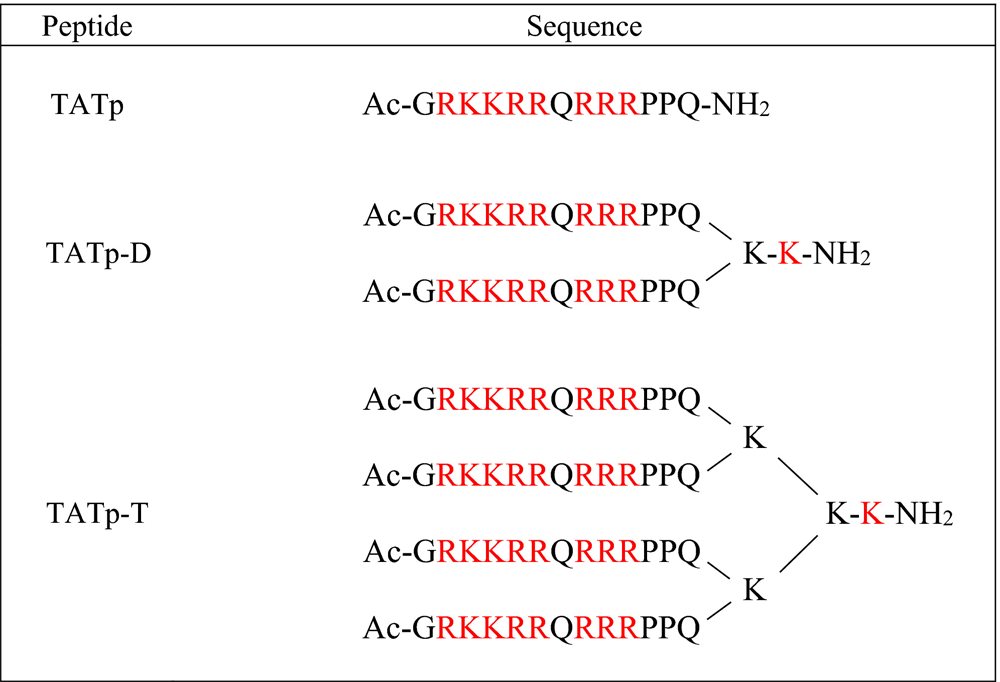TAT (48–60) is a tridecapeptide from the envelope protein of HIV that was previously shown to possess cell-penetrating properties and antibacterial activity, making it a potential drug delivery agent for anticancer drugs and as antibacterial compound. Previous reports indicated that dimerization enhances the desired bioactivity of TAT; hence, we sought to synthesize multimeric TAT peptides. Herein, we describe the effects of multimerization on the antibacterial activity and secondary structure of the peptide. Terminal modifications such as N-acetylation and C-amidation were employed in the design. TATp monomer, dimer, and tetramer were synthesized using solid-phase peptide synthesis, purified by reversed-phase HPLC, and then characterized by mass spectrometry. Multimerization of the peptide did not change the secondary structure conformation. The CD analysis revealed a polyproline-II conformation for all peptide designs. Thus, this study provides a method of increasing the biological activity of the peptide by multimerization while retaining the secondary conformation of its monomeric unit. Furthermore, the bacteria Staphylococcus saprophyticus was found to be susceptible to the dimer and tetramer, with MIC50 of 12.50 μm and <1.56 μm, respectively. This suggests a structure–activity relationship whereby the antibacterial activity increases with increase in valency.

 Institute of Biological Chemistry, Academia Sinica
Institute of Biological Chemistry, Academia Sinica
